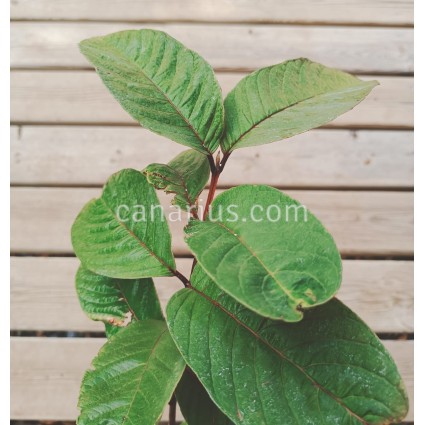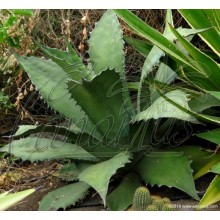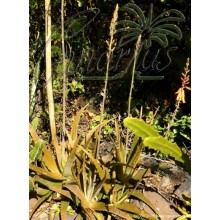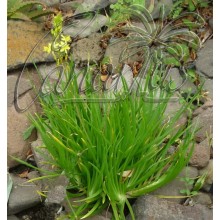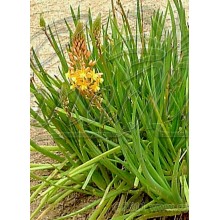Psidium guajaba 'Red Malaysian'
Nuovo
Very appealing guava cultivar, which is both ornamental and edible. The whole plant is colourful, with red-purple leaves, pink flowers and red-maroon fruits with pink sweet flesh. Its bark is copper coloured and peels regularly to expose shades of pink and green.
Fruit is dark red, round in shape and medium sized, sweet, with very few seeds, healthier than other cultivars because of its chemical content.
This variety has a moderate growth rate, a bit slower than green leaved guavas. It is also highly resistant to fruit flies and worms.
Not by chance, this cultivar is richer than others in antioxidants and medicinal molecules. Medical researchers are shedding light on this. In 2021,
Red Guava fruit extract has proved relief and restoration on lung cancer tissues.
Guava is an American tree. This selection now named Red Malaysian Guava was probably started in Brazil, but then it became popular in Asia with this "Malaysian" name.
Psidium guajava is a subtropical tree from the American tropics. Now it is cultivated in many tropical regions of the planet. It is a small tree that reaches up to 2-6 m with a straight trunk, branched with hard wood. Its grey bark often desquamates and show stains. Leaves are opposite, simple, oblong or elliptic of green pale colour. Flowers are white, about 2,5 cm in diameter, fragrant, growing solitary or in small bunches.
Guava is able to take light frost and grows outdoors in Coastal Mediterranean to Tropical Climates. It can also set fruits when grown in large pots. Prune in late autumn and new growth will start flowering during the following summer.
| Coltivazione | Protetta |
| Origine della pianta | Asie |
| Presentazione | Pianta in vaso |
| Famiglia botanica | Myrtaceae |
| Luce | Sole |
| Stagione della fioritura | Mesi più caldi |
| Tipo pianta | Legnose |
| Colore | Rosso |
| Colore | Verde |
| Cura | Vaso |
| Forma | Alberi |















